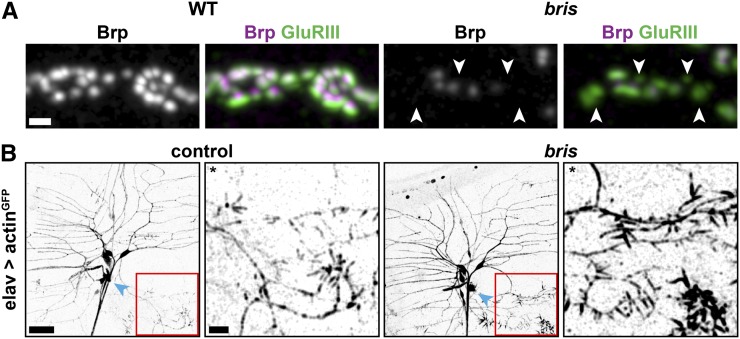Figure 1.
Bristly (bris) mutants are characterized by defects in synaptogenesis and dendritic filopodia formation. (A) Confocal immunofluorescence images showing several synaptic boutons at NMJ 4 of mid-third instar Drosophila larvae. Wild-type and bris larvae were stained for glutamate receptor III (GluRIII, green) and Bruchpilot (Brp, gray and magenta). Many PSDs are unapposed by a presynaptic Brp puncta (arrowheads) in bris larvae. Bar, 1 µm. (B) While dendritic branching of the neuron ddaA (cell body, blue arrowhead) is unaffected, greatly increased filopodia formation at distal secondary branches is detected in bris third-instar larvae. Bar, 20 µm. *For visualization of secondary branches, brightness and contrast were adjusted in both enlargements. Bar, 10 µm.

